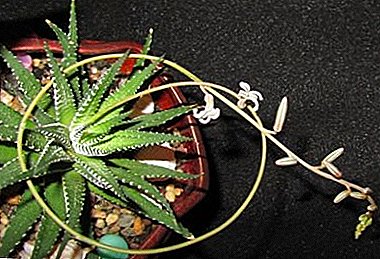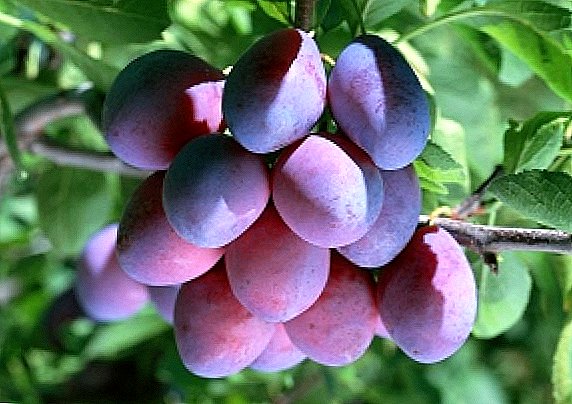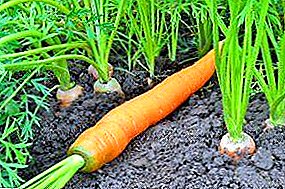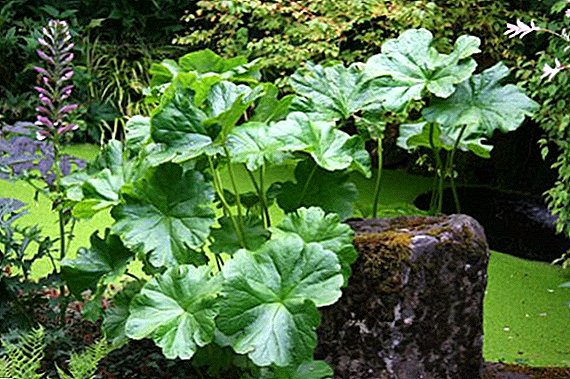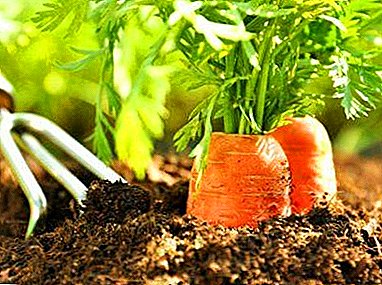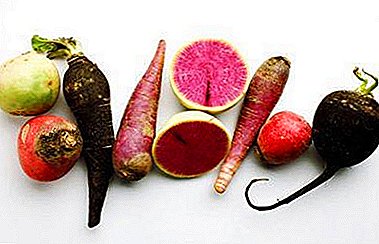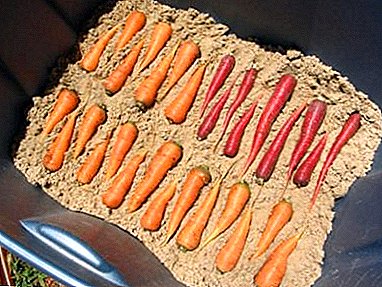
Only those who personally grow crops in the garden plot know how pleasant it is to harvest a rich harvest at the end of the season. Carrots - one of the most popular vegetable crops grown almost everywhere.
But in order to enjoy the beautiful vegetables and saturate your body with vitamins in the winter, you need to know how to dig it correctly and when it is better to do it. Further detail about all the features of the process of collecting carrots from the garden and its storage in the winter.
Vegetable description
Carrots - a culture not only very useful, but also quite unpretentious. She is quite able to survive even very strong cold. The most intensive increase in yield occurs most often with the onset of autumn (usually by September), when the average daily temperature rapidly decreases.
But if there are negative environmental factors, maturity can slow down significantly.
The best varieties that preserve their properties throughout the winter
There are not so many carrot varieties that are suitable for storage during the winter (how to choose the best varieties and how to prepare them correctly, read our article). Among the most "hardy" include the following:
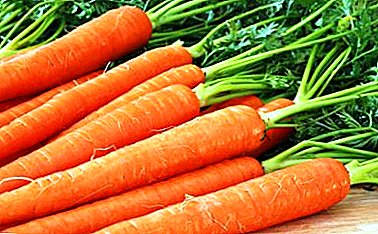 Geranda. Medium size orange fruit varieties are well kept in winter. Among the shortcomings of the variety can be noted only excessive rudeness of the pulp, why the roots are not suitable for eating in raw form.
Geranda. Medium size orange fruit varieties are well kept in winter. Among the shortcomings of the variety can be noted only excessive rudeness of the pulp, why the roots are not suitable for eating in raw form.- Grossa. Large-fruited late variety that can live to spring.
- Cardinal. Winter-hardy variety, which is not only well preserved, but also has excellent taste.
- Losinoostrovskaya-13. Contains a large number of picture and is perfectly stored in the winter.
- Moscow winter. Considered one of the best varieties for winter storage.
- Forto. A well-stored variety that is perfect for making juices.
- Nantes-4. Fine grade for winter storage. Grown everywhere. When creating optimal conditions for storage, the harvest may well be down to spring.
About what else there are suitable varieties, and the shelf life of carrots, you can read here.
When are the harvest dates?
It is not so easy to select the optimal period for storing carrots, since the timing of ripening of carrot root vegetables depends on several factors.
Consider them in detail:
- Sort. When harvesting, it is important to take into account the variety of the crop and focus on the period of its maturation, specified by the producer of the seed.
- Climatic features. The period of harvest from the garden will directly depend on the climate of the region in which the carrots are grown. So, in a warm climate, the harvest can be harvested not once per season, but in the harsh - only by the beginning of autumn and only once.
- The presence of adverse weather conditions. If autumn comes early and will be rainy and cold, you can start digging in September, if autumn is velvety, affectionate, you can postpone harvest until December.
- Subtleties of care. With high-quality care, fruits can be collected in accordance with the maturity of a variety.
- Sizes of fruits. Large-fruited varieties ripen very quickly, and small ones, respectively, more slowly.
- The state of the bottom of the topper. When the tops begin to wither and dry, you can begin harvesting from the garden for winter time.
IMPORTANT: If caring for the carrot crop is of poor quality or not taking care of the growing crop at all, the ripening of the crop will be long, even if an early variety was planted on the site.
How to properly collect it?
 A few weeks before the harvest begins, it’s time to stop watering so that the fruits do not crack (if the weather is steadily warm). The day should be warm, preferably sunny or at least dry.
A few weeks before the harvest begins, it’s time to stop watering so that the fruits do not crack (if the weather is steadily warm). The day should be warm, preferably sunny or at least dry.
If the fruits are short or medium length, you can manually remove the carrots: one hand should grab the tops, the other - gently hold the fruit in the ground. In order to get large long fruits, it is better to use a pitchfork or a shovel. You can read about the rules of digging and preparing vegetables for winter storage here.
When it comes time to harvest for the winter, you need to dig carrots with tools. Here, opinions of gardeners differ: some believe that a fragile carrot can be damaged with a shovel, while others claim that it is just with a fork that the roots can be easily pierced.
Therefore, the choice of a tool depends solely on the personal preferences of the gardener. Here is an example of a pitchfork. Carefully undermine the fruit with a tool and pull it out by the tops, simultaneously cleaning the carrots from the ground.
Immediately after harvesting, carrots should be cleaned from tops.because if you leave it for a long time, it will begin to take away all the nutrients from the fruit. The tops can be easily unscrewed. This will slightly extend the shelf life of the crop.
It is not necessary to dry the fruit: you can immediately decompose the crop into storage boxes, pre-sorting it according to the size of the fruit. It will not be superfluous to learn how to properly cut and stock carrots, as well as the required temperature for storing carrots.
- How to keep carrots in the garden until spring: a step-by-step algorithm, tips on choosing the right variety.
- Proven ways to keep carrots for the winter in the ground.
How to store at home?
There are several effective ways to store carrots in the winter in the cellar after harvesting. Below we look at each of them.
It will be useful to read about how to properly lay a carrot for winter storage.
Softwood sawdust
 Pre-prepared carrot fruits are poured with coniferous sawdust. The phenolic substances contained in their composition will help prevent rotting and fruit disease.
Pre-prepared carrot fruits are poured with coniferous sawdust. The phenolic substances contained in their composition will help prevent rotting and fruit disease.
Carrots can be folded either in a box or directly on the shelves of the cellar. Sawdust is poured on the shelf, fruits are put on top of them, then they are generously covered with sawdust.
Wooden boxes with lids
 This is the easiest way to store carrots. For storage of the crop in this way will need only boxes of wood or cardboard.
This is the easiest way to store carrots. For storage of the crop in this way will need only boxes of wood or cardboard.
Boxes must not have large openings.. It is advisable to put them on a small stand, and not on the floor.
Chalk solution
 Chalk is diluted with water to obtain a thick homogeneous consistency. Each fruit should be immersed in the solution. and dry.
Chalk is diluted with water to obtain a thick homogeneous consistency. Each fruit should be immersed in the solution. and dry.
The solution on the vegetables should be completely dry. Then the fruits are laid out in a cellar on sheets of paper.
River sand
 For such storage of carrots you need clean river sand without impurities.. Before use, sand is better to dry.
For such storage of carrots you need clean river sand without impurities.. Before use, sand is better to dry.
The carrot is placed in boxes with a sand mixture with a thick end up. Covering up above is not necessary, so as not to get the greenhouse effect.
Watch the video about storing carrots in the sand:
Slurry
 Fruits stored in this way will be quite dirty, but they will survive the winter well. This is an ideal option for those who have carrots in the cellar all the time rotting.
Fruits stored in this way will be quite dirty, but they will survive the winter well. This is an ideal option for those who have carrots in the cellar all the time rotting.
Clay is diluted with water to a viscous uniform. Each of the fruits must be completely immersed in the clay mass and dry well.
Onion sawdust
 The essence of this method is almost identical to the storage of carrot harvest in coniferous sawdust. Boxes or large pots piled up with plenty of dry onion peel.
The essence of this method is almost identical to the storage of carrot harvest in coniferous sawdust. Boxes or large pots piled up with plenty of dry onion peel.
It is better to pour carrots in layers, carefully sprinkling each layer with husk. The oils contained in it, will prevent the process of rotting carrots.
Enameled pans
 Quite an original way to preserve the harvest until spring. It is only necessary to prepare large enameled pans and pour carrot fruits in them, previously dried in the sun.
Quite an original way to preserve the harvest until spring. It is only necessary to prepare large enameled pans and pour carrot fruits in them, previously dried in the sun.
On top of the carrot is covered with a napkin, and the pans are closed with a lid. Store containers with the crop should be in the cellar.
Conclusion
As you could see, the collection of carrot harvest and its preparation for storage is a fairly simple process, if you follow certain rules and follow them clearly, you can save the fruits until the first spring days. Good luck!


 Geranda. Medium size orange fruit varieties are well kept in winter. Among the shortcomings of the variety can be noted only excessive rudeness of the pulp, why the roots are not suitable for eating in raw form.
Geranda. Medium size orange fruit varieties are well kept in winter. Among the shortcomings of the variety can be noted only excessive rudeness of the pulp, why the roots are not suitable for eating in raw form.